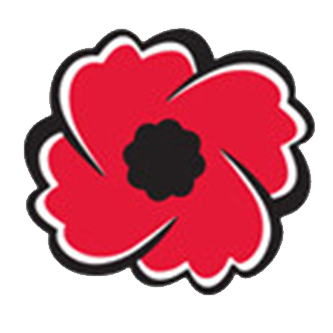Poppy Campain

2024 Poppy Campaign
Mayor McMillan joined members of the Royal Canadian Legion DonnyBrook Branch 513 to launch the 2024 Poppy Campaign. In keeping with tradition, the Mayor was pinned with the first poppy.
“I am proud to wear the poppy, and I’m honoured to join members of the Legion for this event,” said Mayor McMillan. “It’s important for us to honour the courage of Canada’s veterans, and to remember the high price they paid to preserve freedoms for all Canadians.”
The Poppy Campaign runs until November 11. Poppies are available from a variety of locations, including from the Dorchester Legion.
Donations raised from the campaign are used to directly support veterans and their families within the community.

Every year, from the last Friday in October to Remembrance Day, The Legion conducts the Poppy Campaign. Canadians have donated money to support the services we provide and to clearly show their recognition of the debt owed to so many Canadians who gave their lives for our freedom.
The History
In Canada, the Poppy has stood as a visual symbol of our Remembrance since 1921. However, its presence over the graves of soldiers, and in the fields of honour, was noted as early as the 19th century after the Napoleonic Wars. The reason for its adoption over 100 years later in Canada was due to, in no small part, Lieutenant-Colonel John McCrae and his now famous poem, “In Flanders Fields”.
This poem, written in May, 1915 on the day following the death of a fellow soldier, would serve as inspiration three years later for an American teacher, Moina Michael, who made a personal pledge after reading the poem to always wear a Poppy as a sign of Remembrance. In 1920, during a visit to the United States, a French woman, Madame Guerin, learned of the custom and decided to sell handmade Poppies to raise money for the children in war-torn areas of the country. Following her example, the Poppy was officially adopted by the Great War Veteran’s Association in Canada (our predecessor) as its Flower of Remembrance on July 5, 1921.
The Poppy’s Importance
Although its history surely demonstrates the international connections of the Poppy, it is today that the importance of the Poppy as the Flower of Remembrance in Canada is even more evident. Each November, these red flowers can be seen on the lapels and collars of so many, and this single act ensures that our memories of those who died in battle will remain strong.
Thus, the Poppy also serves as a symbol of unity for those who recognize the sacrifices that were made for their freedom, and it forges a bond between people of all ages, not only within Canada, but around the world. As well, donations received during the Poppy Campaign annually raise more than $14 million for the support of Veterans and their families. Poppy Funds are held in trust and the usage is clearly defined.
Lapel Poppies
The lapel Poppies that are worn in Canada today were first made, beginning in 1922, by disabled Veterans under the sponsorship of the Department of Soldiers Civil Re-establishment. Until 1996, Poppy material was made at the “Vetcraft” sheltered workshops run by Veterans Affairs Canada in Montreal and Toronto. The work provided a small source of income for disabled Veterans and their families, allowing them to take an active part in maintaining the tradition of Remembrance.
When it no longer became practical for Veterans Affairs Canada to maintain the “Vetcraft” operations, the Legion volunteered to take on the continuing responsibility for the production of Poppies. In so doing, Dominion Command has awarded a production contract to a Canadian company to produce the Poppies. All operations are conducted under strict Legion control and oversight.
